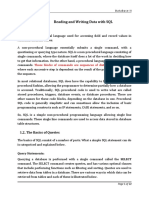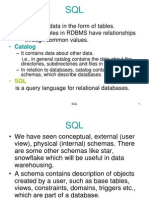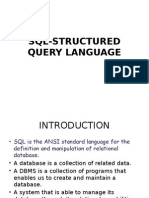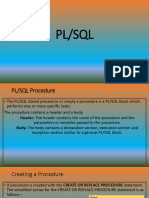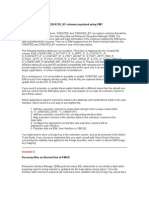0% found this document useful (0 votes)
10 views81 pagesFundamental of Database SQL Presentation
This document provides an introduction to SQL (Structured Query Language), detailing its purpose, commands, and functionalities for managing databases. It covers various SQL command types including DDL, DML, DCL, and DQL, as well as specific commands like CREATE, SELECT, INSERT, UPDATE, DELETE, and JOIN operations. Additionally, it explains the syntax and usage of SQL commands with examples for better understanding.
Uploaded by
kaleabashenafi5Copyright
© © All Rights Reserved
We take content rights seriously. If you suspect this is your content, claim it here.
Available Formats
Download as PDF, TXT or read online on Scribd
0% found this document useful (0 votes)
10 views81 pagesFundamental of Database SQL Presentation
This document provides an introduction to SQL (Structured Query Language), detailing its purpose, commands, and functionalities for managing databases. It covers various SQL command types including DDL, DML, DCL, and DQL, as well as specific commands like CREATE, SELECT, INSERT, UPDATE, DELETE, and JOIN operations. Additionally, it explains the syntax and usage of SQL commands with examples for better understanding.
Uploaded by
kaleabashenafi5Copyright
© © All Rights Reserved
We take content rights seriously. If you suspect this is your content, claim it here.
Available Formats
Download as PDF, TXT or read online on Scribd
/ 81























